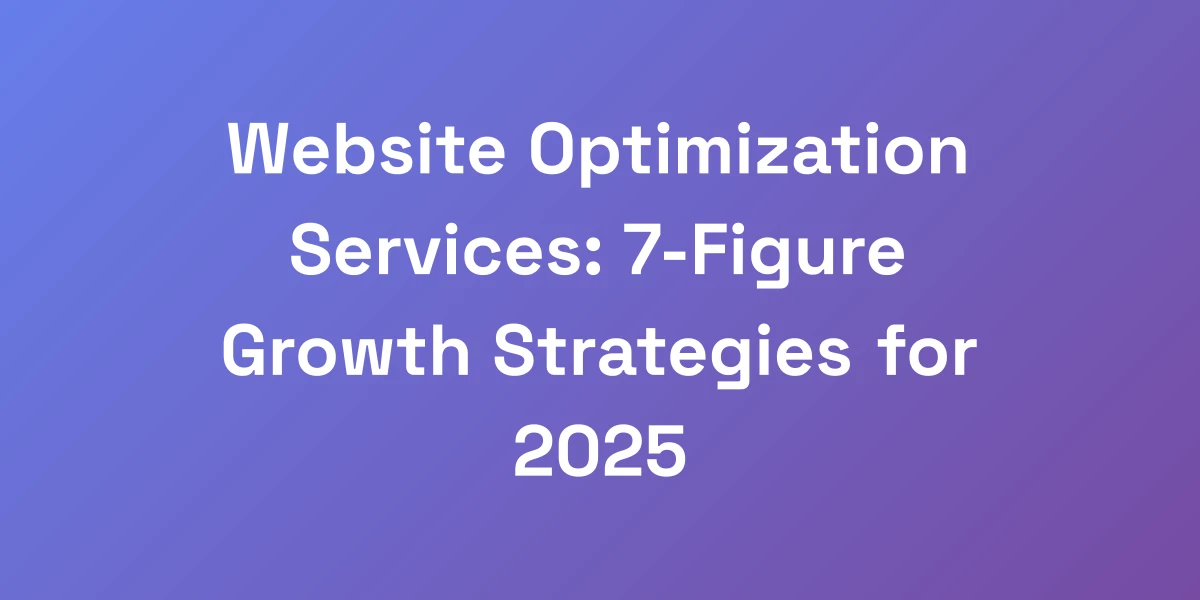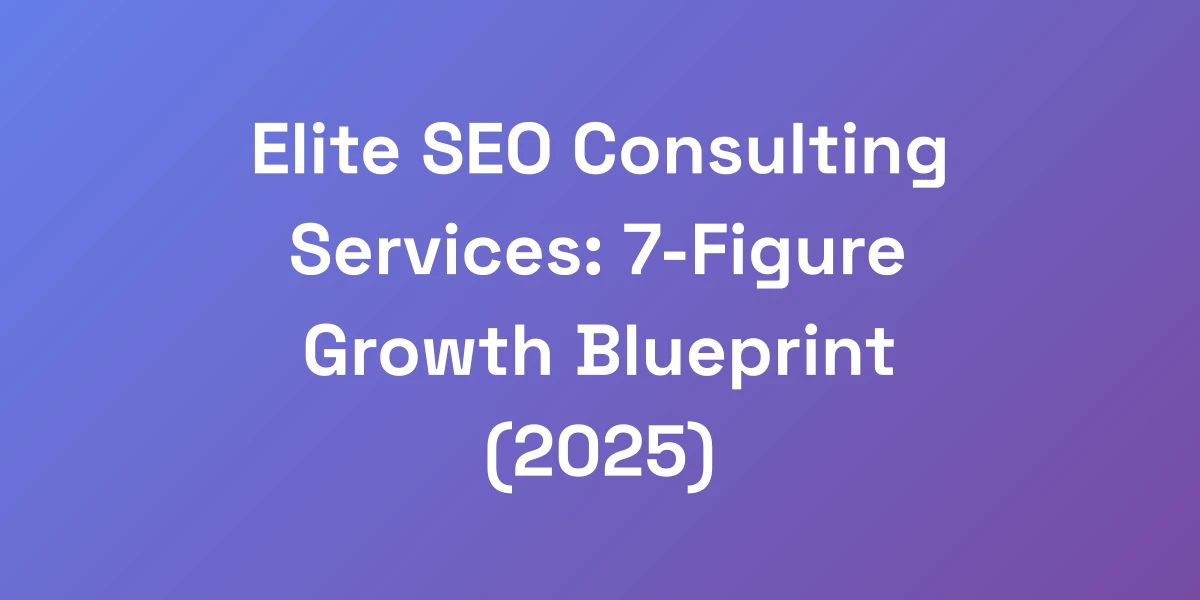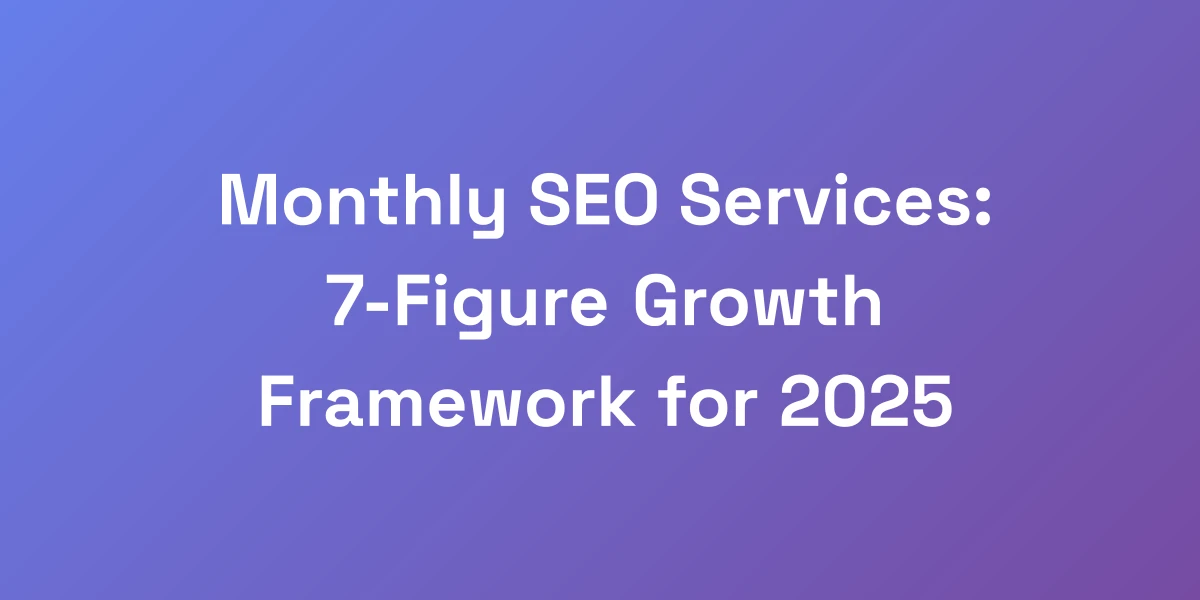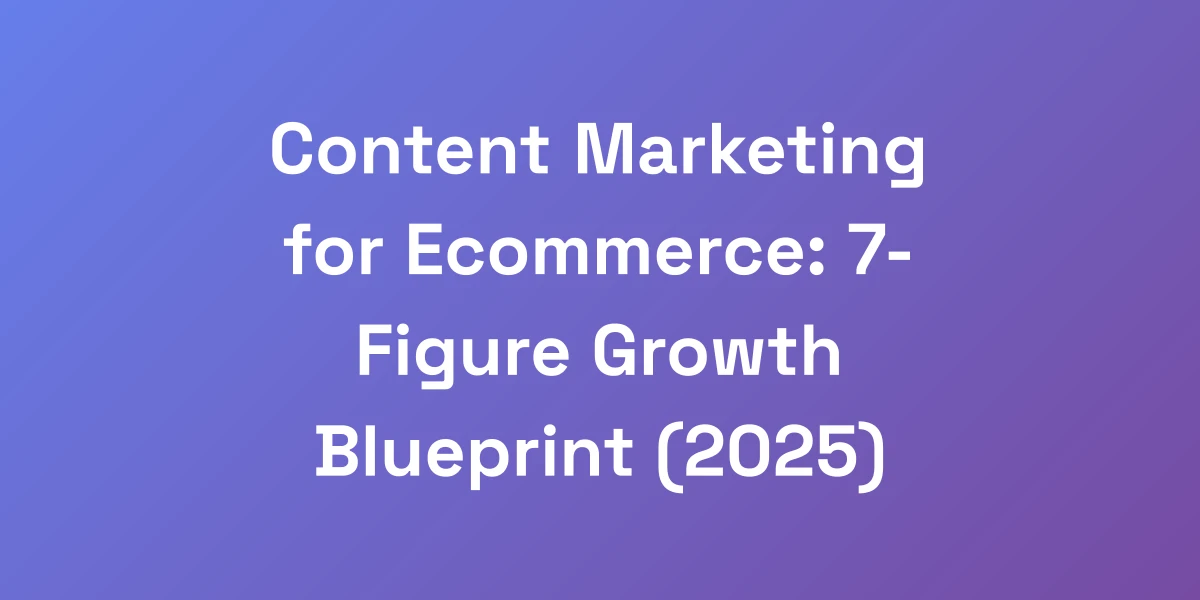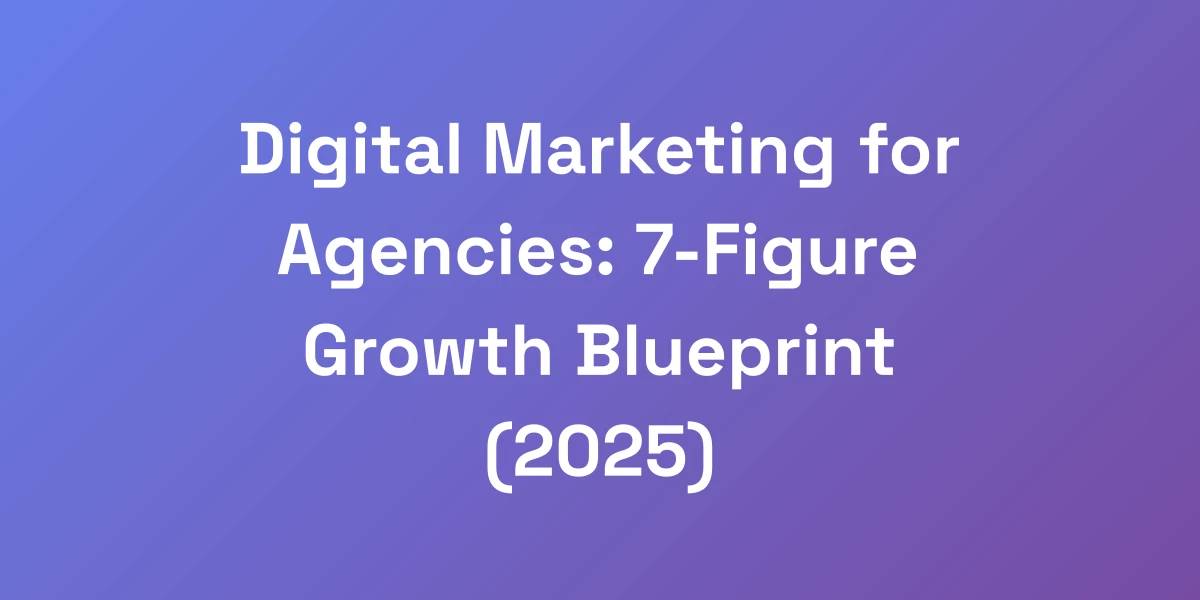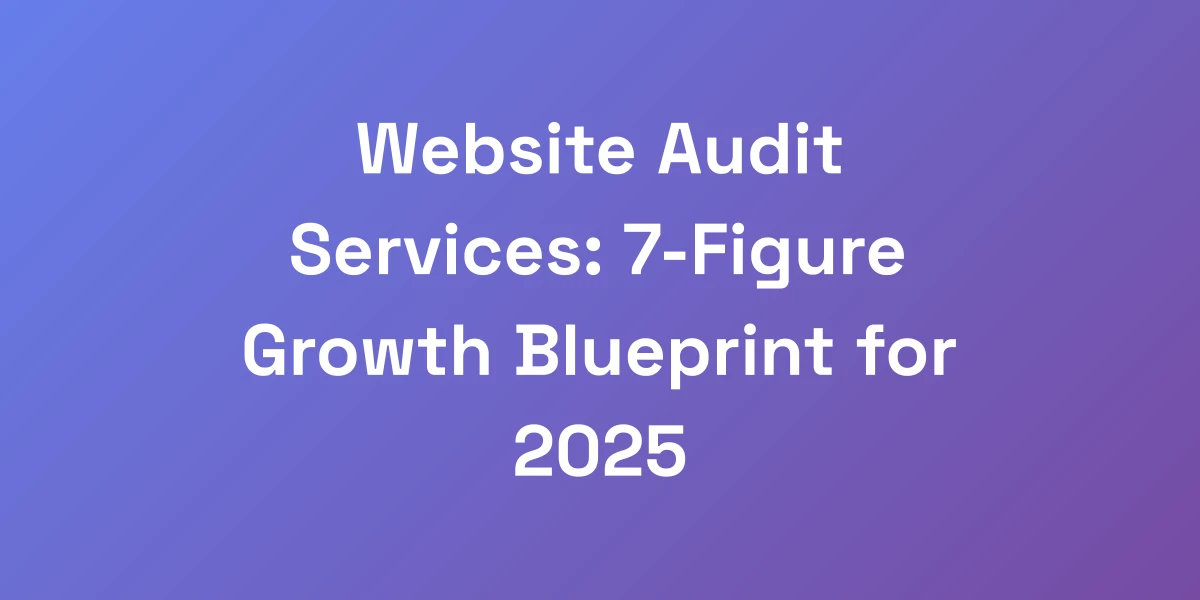
Website Audit Services: 7-Figure Growth Blueprint for 2025
Mar 14, 2025 | By [email protected]
Why 83% of Websites Are Bleeding Money Without Knowing It
Let me hit you with some truth: your website is probably leaving thousands of dollars on the table right now. We’ve audited hundreds of websites, and here’s what blows our minds – most business owners are obsessed with traffic but ignore the hemorrhaging happening in their digital infrastructure.
It’s like trying to fill a bucket with holes. A professional website audit isn’t just a fancy report – it’s a money-finding mission that exposes the gaps where your competitors are eating your lunch.
Here’s what separates the 7-figure websites from the dying ones.
The Real Cost of Website Performance Issues
Imagine losing 7% of your conversions for every second your page load time slows down. According to Catchpoint, a one-second delay can shave off significant revenue.
Think about how many visitors you get daily. Multiply that by the lost conversions, and those numbers add up quickly. It’s not just about user frustration; it’s about tangible losses that can cripple your growth.
Take Walmart’s example. They improved their page load time by just one second and saw a 2% increase in conversions. That’s millions of dollars slipping through the cracks, all because of sluggish website performance.
Common Red Flags That Signal Money Loss
- High Bounce Rates: If visitors leave almost as soon as they land, your site isn’t engaging or meeting their needs.
- Low Conversion Rates: Traffic isn’t translating into sales or leads. Why are you getting visitors but not results?
- Poor Mobile Optimization: With over half of all web traffic coming from mobile devices, a non-responsive site is a death sentence.
- Security Vulnerabilities: 81% of data breaches result from weak passwords. Is your site a target waiting to happen?
- Outdated SEO Practices: Google’s algorithms evolve. If you’re not keeping up, your rankings are plummeting.
These issues aren’t just minor annoyances; they’re direct contributors to your bottom line nosediving.
Why Traditional Website Maintenance Isn’t Enough
Traditional website maintenance often focuses on superficial fixes – updating content, tweaking design elements, or sporadic SEO adjustments. But let’s be real: these are just bandaids on a sinking ship.
What you need is a comprehensive audit that dives deep into every facet of your website’s performance. It’s about systemic changes, not just quick fixes. Incorporating marketing automation for agencies can streamline your audit processes and enhance overall efficiency.
Think of it as routine medical check-ups versus emergency care. Regular maintenance might keep your site alive, but audits ensure it’s thriving and growing.
The ROI Mathematics of Professional Audits
Let’s break down the numbers. A professional website audit can cost anywhere from a few hundred to several thousand dollars. But consider this: Queue-it reports that improving page speed by one second can boost daily revenue by $5,000. Annually, that’s an additional $1.8 million.
So, at worst, your audit pays for itself quickly. And the benefits don’t stop at speed optimization. From enhanced SEO to better user experience, the cumulative impact can skyrocket your revenue.
We’re talking about transforming a website that barely gets by into a 7-figure revenue machine. It’s not just an investment; it’s a strategic move that can redefine your business’s financial trajectory.
Case Study: From $10K to $100K Monthly Revenue
Consider a mid-sized e-commerce business generating $10K monthly. After our comprehensive audit, we identified critical issues: slow load times, poor mobile optimization, and weak SEO strategies.
We implemented targeted changes: optimizing images, restructuring the site for mobile users, and revamping their SEO approach. Within six months, their monthly revenue skyrocketed to $100K.
This isn’t an isolated incident. With the right audit and actionable insights, businesses can achieve exponential growth, turning underperforming websites into powerful revenue engines.
The 7-Point Website Audit Framework That Generated $2.4M
After working with companies from startups to eight-figure enterprises, we’ve developed a bulletproof audit system that consistently delivers results. This isn’t your typical technical SEO checklist – it’s a comprehensive diagnosis of your entire digital ecosystem.
Think of it as your website’s MRI, blood work, and stress test combined. We’re looking at seven critical areas that directly impact your bottom line, from conversion architecture to content monetization potential.
Let us break down exactly what we look for.
Technical Performance & Speed Optimization
Website speed is king. Every second counts, and optimization can mean the difference between a sale and a lost customer.
- Page Load Time: Aim for under 2 seconds to minimize bounce rates.
- Core Web Vitals: Largest Contentful Paint (LCP), Interaction to Next Paint (INP), and Cumulative Layout Shift (CLS) metrics are crucial for user experience and SEO.
- Server Response Time: Time to First Byte (TTFB) should be ≤0.8 seconds.
By optimizing these elements, we drastically improve user satisfaction and conversion rates.
User Experience & Conversion Pathways
User experience (UX) isn’t just about aesthetics; it’s about creating intuitive pathways that guide visitors to conversion.
- Navigation: Clear and logical menus enhance usability.
- Call-to-Actions: Strategically placed and compelling CTAs drive conversions.
- Design Consistency: A cohesive design builds trust and keeps users engaged.
Optimizing UX ensures that visitors not only stay longer but also take the actions that matter most to your business.
Content Quality & Monetization Assessment
Your content is the backbone of your website. High-quality, relevant business blogging attracts and retains visitors.
- Content Relevance: Align your content with your audience’s needs and interests.
- Monetization Potential: Identify opportunities to turn content into revenue streams through ads, affiliate links, or product placements.
- Engagement Metrics: Analyze how users interact with your content to refine strategies.
By enhancing content quality, we not only improve user engagement but also open new avenues for monetization.
SEO Infrastructure & Ranking Potential
SEO isn’t a one-time task; it’s an ongoing strategy that keeps your site visible and competitive.
- On-Page SEO: Optimize title tags, meta descriptions, and header tags for better search engine visibility.
- Keyword Strategy: Implement strategic keyword placement and LSI (Latent Semantic Indexing) to capture relevant search traffic.
- Backlink Profile: Strengthen your backlink profile to enhance domain authority and ranking.
Effective SEO strategies, including those outlined in the SEO Freelancer’s Blueprint, drive organic traffic, which is a sustainable and cost-effective way to grow your business. Additionally, implementing SEO optimization automation and search engine optimization automation can further enhance your SEO efforts.
Security & Risk Management
In a world where cyber threats are rampant, website security is non-negotiable.
- SSL Certificates: Ensure all pages are secure with HTTPS to protect user data and build trust.
- Regular Security Audits: Identify and fix vulnerabilities to prevent breaches.
- Data Privacy Compliance: Adhere to regulations like GDPR and CCPA to safeguard user information.
A secure website not only protects your assets but also boosts user confidence, leading to higher conversions.
Mobile Responsiveness & Cross-Platform Performance
With over half of all web traffic coming from mobile devices, responsive design is paramount.
- Responsive Design: Ensure your website looks and functions flawlessly across all devices.
- Mobile Load Times: Optimize for speed on mobile to enhance user experience.
- Touch-Friendly Elements: Make buttons and links easily tappable for mobile users.
Mobile-first approaches not only cater to the majority of users but also align with Google’s mobile-first indexing, improving your SEO rankings.
Competitive Edge Analysis
Understanding your competition is key to staying ahead in the game.
- Benchmarking: Compare your website’s performance against top competitors.
- Opportunity Identification: Discover gaps in your competitors’ strategies that you can exploit.
- Trend Analysis: Stay updated with industry trends to keep your site relevant and competitive.
By analyzing your competitors, you gain insights that can be leveraged to enhance your own website’s performance and market positioning.
The Exact Process We Use to 10x Website Performance
Listen, we’re going to give you the exact playbook we use when conducting website audits that transform businesses. This isn’t theory – it’s the same process that’s generated millions in additional revenue for our clients.
The key is in the sequence and depth of analysis. Most auditors scratch the surface; we dig until we find gold.
Every step is designed to uncover specific opportunities that translate directly into revenue growth. Here’s the step-by-step system that will revolutionize your digital presence.
Initial Data Collection & Baseline Metrics
We start by gathering all relevant data – traffic sources, user behavior, conversion rates, and more. Establishing baseline metrics is crucial for measuring improvement.
- Analytics Review: Deep dive into Google Analytics, heatmaps, and other tracking tools.
- Performance Benchmarks: Document current performance against industry standards.
- Goal Alignment: Ensure website goals align with overall business objectives.
This foundation allows us to identify where you stand and what needs immediate attention.
Deep-Dive Technical Analysis Protocol
Next, we conduct a thorough technical analysis to uncover any hidden issues that might be holding your site back.
- Site Crawling: Using advanced tools to identify broken links, duplicate content, and other technical glitches.
- Speed Testing: Comprehensive page speed analysis using Google PageSpeed Insights and other tools.
- Core Web Vitals Assessment: Evaluate LCP, INP, and CLS to ensure optimal performance.
This step ensures that your website is technically sound and primed for top performance.
User Behavior Pattern Recognition
Understanding how users interact with your site is key to improving conversions and user satisfaction.
- Heatmaps: Visualize user interactions to see where they click, scroll, and spend the most time.
- Session Recordings: Watch real user sessions to identify pain points and friction areas.
- Behavior Flow Analysis: Track the path users take through your site to optimize navigation and conversion funnels.
By analyzing user behavior with behavior analytics tools, we can tailor the user experience to better meet their needs and drive desired actions.
Competitive Gap Analysis Framework
We don’t just look inward; we analyze your competitors to find gaps and opportunities.
- Competitor Benchmarking: Compare key metrics like traffic, engagement, and SEO rankings against top competitors.
- SWOT Analysis: Identify strengths, weaknesses, opportunities, and threats relative to your competition.
- Opportunity Mapping: Pinpoint areas where your competitors are lacking and where you can excel.
This competitive edge allows us to strategize effectively and position your website ahead of the pack.
Custom Action Plan Development
With all data in hand, we craft a tailored action plan that addresses your specific needs and goals.
- Prioritized Recommendations: Focus on changes that will have the most significant impact first.
- Strategic Initiatives: Implement strategies across SEO, UX, content, and technical performance.
- Resource Allocation: Assign necessary resources and set realistic timelines for each action item.
This customized approach ensures that every recommendation is relevant and actionable, maximizing your return on investment.
Implementation Priority Matrix
Not all changes are created equal. We use a priority matrix to determine which actions to tackle first based on impact and effort.
- High Impact, Low Effort: Quick wins that offer substantial benefits with minimal effort.
- High Impact, High Effort: Major projects that require significant resources but yield significant returns.
- Low Impact, Low Effort: Minor tweaks that can be addressed alongside other tasks.
- Low Impact, High Effort: Changes that may not justify the effort and are deprioritized.
This ensures that your resources are used efficiently, focusing on actions that drive the most value.
How to Choose Website Audit Services That Actually Deliver Results
Here’s the uncomfortable truth: 90% of website audit services are glorified automated reports that provide zero actionable value.
We’ve seen businesses waste thousands on surface-level audits that miss the real issues killing their growth.
You need to know exactly what separates the game-changers from the time-wasters. We’re here to show you the non-negotiable criteria that ensure you’re getting an audit that will actually move the needle on your business metrics.
Red Flags to Watch Out For
- Automated Reports Only: No human analysis means missing context-specific insights.
- Lack of Customization: One-size-fits-all audits don’t address unique business needs.
- Hidden Fees: Be wary of services that aren’t transparent about their pricing structure.
- Vague Recommendations: Without detailed, actionable steps, the audit is useless.
- No Follow-Up: Great audits come with ongoing support to implement changes.
Spotting these red flags can save you from investing in ineffective services that don’t contribute to your growth.
Must-Have Audit Service Components
- Comprehensive Technical Analysis: Cover every technical aspect from site speed to security.
- SEO Evaluation: In-depth SEO analysis including on-page, off-page, and technical SEO.
- User Experience Review: Detailed assessment of UX elements and conversion pathways.
- Content Audit: Evaluate content quality, relevance, and monetization potential.
- Competitive Analysis: Insights into how you stack up against your competitors.
- Actionable Recommendations: Clear, prioritized steps to improve your website’s performance.
These components ensure that the audit is thorough and provides a clear roadmap for improvement.
Price vs. Value Analysis
When evaluating audit services, prioritize value over price. An affordable audit that misses key issues won’t help you grow, no matter how cheap it is.
- Investment Perspective: View the audit as an investment in your business’s future.
- Return on Investment: Consider the potential revenue gains from implementing audit recommendations.
- Service Quality: Higher-priced services often come with more expertise and deeper insights.
Choosing based on value ensures you’re getting the most bang for your buck, driving substantial growth.
Results Measurement Metrics
To ensure the audit delivers tangible results, it’s essential to have clear metrics for success.
- Conversion Rate Improvements: Track changes in conversion rates post-audit.
- SEO Rankings: Monitor keyword rankings to see if SEO strategies are effective.
- Traffic Growth: Analyze increases in organic, direct, and referral traffic.
- User Engagement: Measure metrics like time on site, pages per session, and bounce rates.
- Revenue Increases: Directly correlate audit actions with revenue growth.
These metrics help in assessing the real impact of the audit and guiding future strategies.
Service Provider Qualification Checklist
- Proven Track Record: Look for providers with a history of successful audits and client testimonials.
- Expertise: Ensure they have specialists in all critical areas – technical SEO, UX, content, and security.
- Holistic Approach: They should offer a comprehensive audit covering all facets of your website.
- Transparent Process: Clear methodologies and reporting practices are a must.
- Ongoing Support: Providers should offer implementation support and follow-up consultations.
Using this checklist ensures you partner with a provider that can genuinely drive your website’s growth.
Implementation Support Requirements
An audit’s true value is realized through its implementation. Without proper support, even the best recommendations can fall flat.
- Dedicated Account Manager: Someone to guide you through the implementation process.
- Training and Resources: Provide training for your team to understand and execute recommendations.
- Ongoing Consultation: Continuous support to address challenges and optimize strategies.
- Performance Monitoring: Tools and insights to track the effectiveness of implemented changes.
Comprehensive support ensures that you can effectively translate audit insights into actionable growth strategies.
Implementation Roadmap: From Audit Insights to Revenue Growth
Getting an audit is just the beginning – it’s what you do with those insights that determines your ROI. We’ve seen too many businesses sit on golden recommendations because they didn’t know how to execute them effectively.
Let us show you exactly how to turn audit findings into a systematic implementation plan that drives real results.
We’ll cover the precise sequence of actions that will give you the biggest bang for your buck, prioritized by impact and resource requirements.
Priority Action Item Sequencing
Start by tackling high-impact, low-effort tasks. These quick wins can provide immediate benefits and build momentum for larger projects.
- Fix Critical Errors: Resolve any website issues that are drastically affecting performance or security.
- Optimize High-Traffic Pages: Enhance pages that receive the most visits to maximize their conversion potential.
- Improve Load Times: Address speed optimizations that will quickly improve user experience.
By prioritizing tasks this way, you ensure that your efforts yield the maximum return as quickly as possible.
Resource Allocation Strategy
Effective implementation requires smart resource allocation. Assign the right team members to the right tasks based on their expertise and workload capacity.
- Define Roles: Clearly outline who is responsible for each action item.
- Allocate Budget: Ensure each task has the necessary financial resources to be completed effectively.
- Set Milestones: Establish clear deadlines and checkpoints to keep the implementation on track.
Strategic resource allocation prevents bottlenecks and ensures that your implementation plan moves forward smoothly.
Timeline Development Framework
Create a detailed timeline that outlines when each task will be started and completed. This keeps everyone accountable and ensures steady progress.
- Short-Term Goals: Focus on immediate improvements that can show results within weeks.
- Medium-Term Goals: Address more complex issues that require several months to implement.
- Long-Term Goals: Establish ongoing strategies for continuous optimization and growth.
A well-structured timeline helps in maintaining momentum and tracking progress toward your revenue goals.
Progress Tracking Systems
Implement robust systems to monitor the progress of your implementation. This ensures that you’re staying on track and can make adjustments as needed.
- Regular Check-Ins: Schedule frequent meetings to review progress and address any roadblocks.
- Performance Dashboards: Use dashboards to visualize key metrics and track changes over time.
- Feedback Loops: Continuously collect feedback from your team and users to refine your strategies.
These systems provide the visibility and flexibility needed to keep your implementation plan effective and adaptive.
ROI Measurement Protocol
To truly understand the impact of your implementation, you need a clear ROI measurement protocol.
- Define KPIs: Identify key performance indicators that align with your business goals.
- Baseline Comparisons: Compare pre-audit metrics with post-implementation results.
- Regular Reviews: Conduct periodic reviews to assess ongoing performance and make necessary adjustments.
This protocol allows you to quantify the benefits of your audit and ensure that your strategies are driving the desired outcomes.
Long-term Maintenance Plan
Establish a long-term maintenance plan to sustain and build upon the improvements you’ve made.
- Scheduled Audits: Regularly audit your website to catch new issues and ensure ongoing optimization.
- Continuous Improvement: Implement a culture of continuous improvement to keep enhancing your website.
- Ongoing Training: Keep your team updated with the latest best practices and tools in website management.
A long-term plan ensures that your website remains optimized, secure, and competitive, supporting sustained revenue growth.
Conclusion
We’ve walked you through the critical reasons why most websites are bleeding money and how a comprehensive audit can turn things around. From understanding the real costs of performance issues to implementing a detailed 7-point audit framework, the path to 7-figure growth is clear and actionable.
Remember, a website audit isn’t just a one-time fix; it’s a strategic investment in your business’s future. By choosing the right audit services and following a structured implementation roadmap, you set your website up for sustained success and continuous revenue growth.
Ready to transform your website into a revenue-generating powerhouse? Take action now and schedule your professional website audit today. Let’s unlock the full potential of your digital presence together.
What actions will you take today to ensure your website isn’t leaking money? Share your thoughts and let’s start the conversation on driving your business to new heights.

